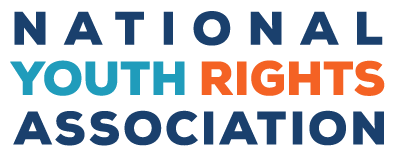The Hypocrisy of the Voting Age
During the 2006 primary election in Minnesota, 17-year-old Jesse Hunter voted for his first time. Unlike many of his peers, the teenager got an early beginning to fulfilling his civic duties as a citizen. However, he was soon charged with voter fraud – a class one felony in his state. Hunter was too young to legally vote (“Polling Officials”). Alex Koroknay-Palicz, one of the leaders of the movement to lower the voting age, believes that the teenager should not be charged with a crime. Koroknay-Palicz explains that “many adults take the right to vote for granted … yet for exercising the central civil right in this country, Jesse is being charged with a felony” (qtd. in “Polling Officials”). To avoid similar cases of limiting political interest, the voting age should be lowered because in the past several years, many teenagers have worked and paid taxes, volunteered in their communities, and voiced their opinions.
The evolution of voting rights has been a continuous process over the past two centuries. Originally, only white males over the age of 21 could vote in government elections; women and African Americans were disenfranchised for several decades (“History of the Voting Age”). It was not until 1971 that the voting age for federal elections was lowered from age 21 to 18 (“Constitution of the United States”). During World War II, “Old enough to fight, old enough to vote” was a popular expression that explained many people’s objection to disenfranchised teenagers being conscripted to serve in a war. The movement to lower the voting age to 18 continued for 12 to 13 years into the Vietnam War (“Online Conversation”). After the voting age was lowered to 18, smaller movements began to emerge to lower the age even more.
Within the past few years, several state and local bills have been introduced to lower the voting age. For example, Sen. John Vasconcellos of California recently introduced a bill to lower the age to 14 in state and local elections. Although the bill would have only given teenagers partial votes, it was not approved (Garcia B7). In 2002, the city council of Cambridge, Massachusetts, approved a bill to lower the voting age to 17 for local elections (Flaherty A18). In addition, legislators have also introduced bills in Berkeley, California, and in New York City, New York, to lower the age in municipal elections (Epstein 346). Many of these bills have been inspired by politicians who are committed to increasing the rights of their younger constituents.
Compared to a handful of other countries, the voting age in the United States is abnormal. Government officials in Austria and Isle of Man, a subordinate country of the United Kingdom, recently lowered their voting ages to 16 in April of 2007 and November of 2006, respectively. Other countries with a voting age lower than 18 include Nicaragua, which drastically lowered its age from 21 to 16 in 1984; Israel (17 in local elections); Netherlands (16); parts of Germany (16); and a few others (“The World Fact Book”). Developed countries throughout the world are beginning to recognize the importance of the youth vote, but most government officials in the United States still fail to do so.
Teenagers elect to work part time for a variety of reasons: to help pay for their bills or to even provide for their families in some situations. According to a 1995 study, “80% of 16 and 17 year-olds work at some point before graduation” (“Studies”). Considering that the number of teenagers between the ages of 12 to 17 was at 32 million in 2000, that is a substantial amount of teenage workers (“Teen Market Profile”). Because of the number of working teens, it has become apparent that teenagers have a significant amount of buying power and influence on the consumer market. In 2005, it was estimated that teens collectively spent $159 billion of their own money (“TRU Projects Teen Spending Total”). In addition to these figures projected by TRU, the authors of the “Teen Market Profile” also found that teenagers have an average $4,500 in available spending money each year (“Teen Market Profile”). The teenage segment of the population continues to contribute to the economy each year by working and spending the money they earn.
Most teenagers, whether employed or not, are required by the IRS to pay taxes, just like adults. In states with sales taxes, all consumers must pay an additional percentage of their purchase for the benefit of their state and local governments. The mean sales tax of the country is at a rate of 6.8 percent (“Frequently Asked Questions”). If the annual spending rate of teenagers is computed with the sales tax rate, teenagers spend nearly $11 billion in sales tax alone each year. Working teens are also subjected to federal and state income taxes and FICA taxes, the taxes that fund Social Security and Medicare. These teenagers do not have any representation in how their money is spent, but they are still required to pay these taxes. However, some opponents believe that they do not have a “stake in democracy because they typically do not own property or pay taxes on a full-time income” (Vermeer). This is a classic case of the infamous “taxation without representation” from the American Revolutionary War during the eighteenth century.
Teenagers are continuing to volunteer in their schools, churches, and communities. Recent studies have shown that the volunteer rates of teenagers have increased two-fold in the past few years. The rates of teenaged volunteers are largely consistent with that of the adult population (“Volunteerism dipped for first time”). However, there are some critics who believe that teenagers are not active in their communities, and that they are not aware of the “key issues affecting society” (Diekmeyer). The rates of teenage volunteerism continue to rise, and it is proof that teenagers are active citizens.
By the time a student becomes 16 years old, he or she has likely completed a civics course and voiced his or her opinions about several different issues. In North Carolina, all students are required to complete a course in civics and economics. The course teaches students about the government, how it works, the importance of informed voting, and other relevant issues (“Social Studies”). Oftentimes, these courses include political debates among students and teachers. From an early age, students are encouraged to participate in the KidsVoting program, a program that allows students to cast mock votes for government officials. In 1996, one of the earlier years of the program, more than 45 million students turned out to vote. The implementation of the program has also shown a correlation to an increase of parents turning out to vote (Simon). In addition to learning about government in the classroom, many students are involved as leaders of clubs and community organizations, where they can voice their opinions and gain firsthand experience of leadership.
Teens work and pay taxes, volunteer in the community, and voice their opinions; therefore, the voting age should be lowered to 16. If the government and other concerned citizens are interested in increasing interest, turnout for young adults, and developing better relationships between parents and teenagers, the voting age should be lowered. To show the effectiveness of a lower voting age, several states or even municipalities should lower the age to vote. If legislators are resistant, action should be taken to allow students to vote in local school board elections. The school board has the most control and influence on teenagers, and it is necessary that they have representation on this government body. Other countries have lowered their voting ages, and it is now time for the United States to do the same.
Works Cited
“Constitution of the United States.” The National Archives Experience. 2007. The National Archives Experience. 24 Apr 2007 http://www.archives.gov/national-archives-experience/charters/constitution_amendments_11-27.html.
Diekmeyer, Peter. “Raise the voting age to 30.” Diekmeyer Report. 2002. Diekmeyer Report. 25 Apr 2007 http://www.peterdiekmeyer.com/020708.html.
Epstein, Robert. The Case Against Adolescence. 1st. Sanger, C.A.: Quill Driver Books, 2007.
Flaherty, Julie. “Voting Rights for 17-Year-Olds.” The New York Times. 27 Mar 2002: A18. Opposing Viewpoints Resource Center. Gale Group Databases. A.C. Reynolds High School Lib., Asheville, N.C. Gale Group. 24 Apr 2007. http://galenet.galegroup.com.
“Frequently Asked Questions.” The Sales Tax Clearing House. 2007. The Sales Tax Clearing House. 29 Apr 2007 http://thestc.com/FAQ.stm.
Garcia, Ken. “Courting the Youth Vote.” San Francisco Chronicle. 10 May 2004: B7. Opposing Viewpoints Resource Center. Gale Group Databases. A.C. Reynolds High School Lib., Asheville, N.C. Gale Group. 24 Apr 2007 http://galenet.galegroup.com.
“History of Voting.” ActiVote. 2007. ActiVote. 24 Apr 2007
“Online Conversation: Law, Diversity, and the Vote.” Youth Citizenship. 2007. American Bar Association. 24 Apr 2007
“Polling Officials Allowed 17-Year-Old to Vote.” National Youth Rights Association. 10 Oct 2006. National Youth Rights Association. 23 Apr 2007
Simon, James. “Nurturing democracy, citizenship and civic virtue: The Kids Voting program revisited.” Journal of Social Studies Research. 1998. Kansas State University. 24 Apr 2007 http://findarticles.com/p/articles/mi_qa3823/is_199804/ai_n8787072/print.
“Social Studies.” North Carolina Standard Course of Study. North Carolina Public Schools. 29 Apr 2007 http://www.ncpublicschools.org/curriculum/socialstudies/scos/.
“Studies: Light 1995; Steinberg and Cauffman 1995.” Evansville Courier 10 Aug 2003: B3.
“Teen Market Profile.” Magazine Publishers of America. 2007. Mediamark Research, Inc. 24 Apr 2007 http://www.magazine.org/marketprofiles.
“The World Fact Book.” CIA – The World Fact Book. 2007. Central Intelligence Agency. 25 Apr 2007 https://www.cia.gov/cia/publications/factbook/.
“TRU Projects Teen Spending Total for 2005 at $159 Billion.” Merchandise Group. 30 Dec 2005. Merchandise Group. 24 Apr 2007 http://www.merchandisegroup.com/.
Vermeer, Susan. “Voting Age.” Citizenship Education. May 2004. Education Commission of the States. 24 Apr 2007 http://www.ecs.org.
“Volunteerism dipped for first time since 9/11, study shows.” CNN. 15 Apr 2007. CNN. 25 Apr 2007 http://edition.cnn.com/2007/US/04/15/volunteer.rate/.






The Voting age should be lowered because by giving children the right to vote they cannot complain about not having a saying in society. The government doesn’t want to give kids democracy because they feel it would give teens to much power.
No, minors have no business voting. The government has a duty to draw the line, and it has been drawn at 18 (for several very good reasons). Kids would just vote for Dims since they’ve been indoctrinated with Marxist propaganda in their public “schools.” That would make our country even WORSE off than it is now.